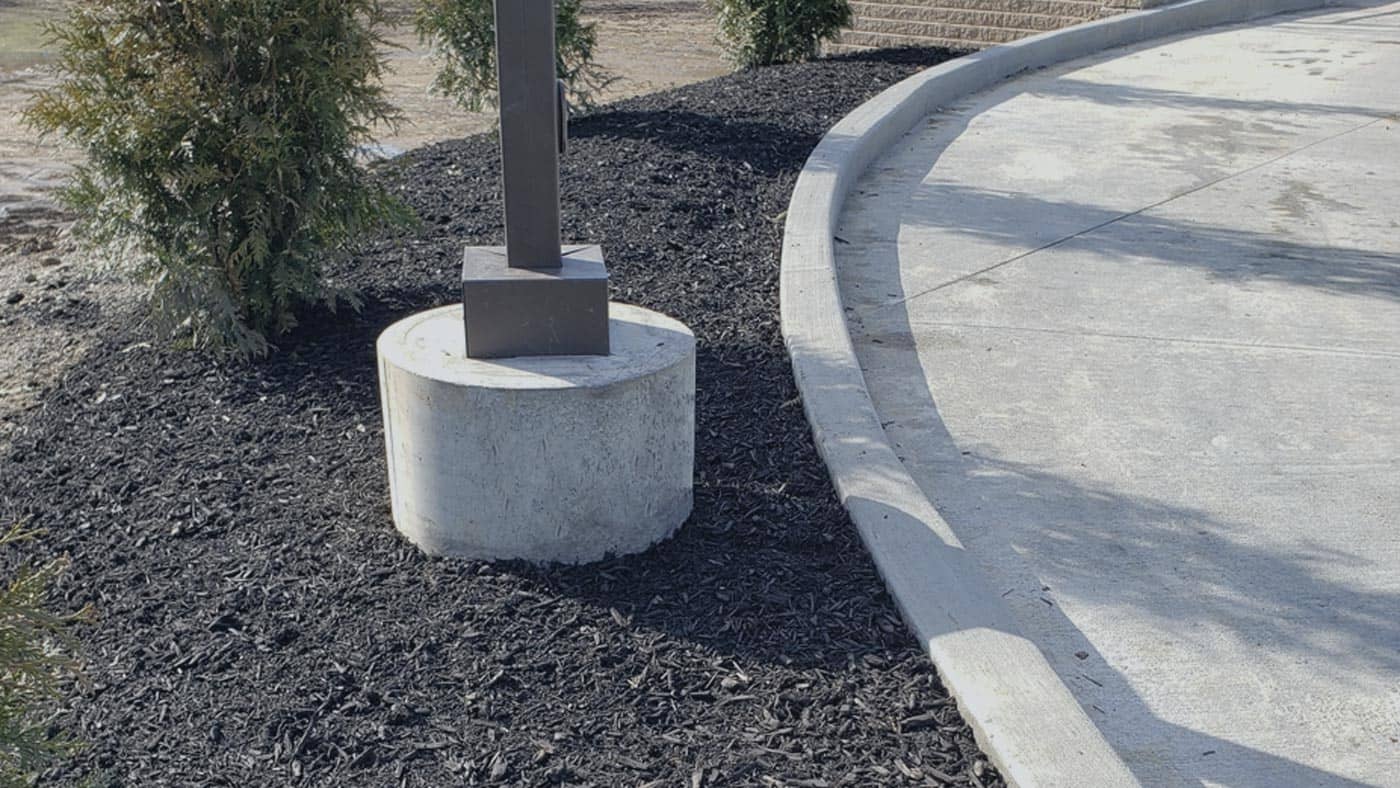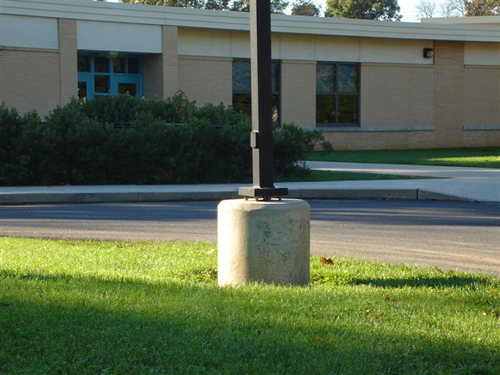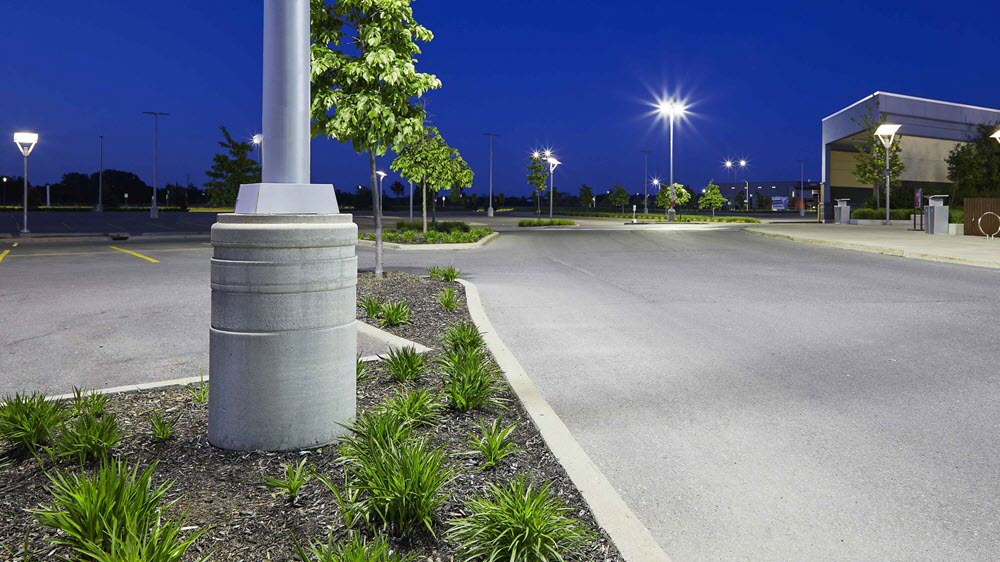Flood Light Base Servicesin Marine City MI
Comprehensive Flood Light Installation for Enhanced Safety
We Are Locally Owned & Operated For Over 37 Years
Contact Us Today!
We Serve Businesses In And Around The Following Cities:
About Flood Light Base Services
An Enlightening Introduction
When it comes to illuminating commercial properties in Marine City, no form of exterior lighting is as effective as floodlights. Properly chosen and installed, they not only cut back the darkness but also reinforce the overall security measures in place. Yet, the pivotal role a floodlight plays largely depends on its base. Flood light bases secure the units, resist weather conditions, provide rotation, and potentially enable easy maintenance.
Investing in the right flood light bases can be likened to setting a robust foundation for an edifice. Whether you’re a property manager, a business owner, or a partaker in city planning, understanding this element is critical. This comprehensive guide aims not only to shed light on the process and benefits but also to empower you with practical insights and real-world applications.
Understanding Flood Light Bases
Flood light bases serve as the support structure for flood lights. They facilitate the positioning, mobility and the overall lifespan of the lights themselves. There’s no overstating their importance, particularly in commercial properties where lighting utility and durability are major considerations.
Choosing the proper base is a matter of balancing cost, flexibility, environmental resistance and ease of maintenance. The major types of flood light bases you may come across are embedded, wall mounted, or pole mounted. Each type is uniquely suited to different scenarios and possesses distinct advantages. For instance, embedded bases are ideal for permanent installations while wall-mounted bases offer flexibility with adjustable angles.
Informative Process of Installation
The process of installing flood light bases can be complex depending on the specific type of base chosen and the terrain of your property. It requires a meticulous step by step approach that starts with performing a thorough site audit to identify the optimal locations for the flood lights. Followed by the selection of the right base type, then the actual task of installing the bases, and finally the mounting of the flood lights.
For such complex tasks, with a team of professionals scaling rooftops or digging into the ground, one cannot help but recommend the services of seasoned experts. Depending on where you’re located, companies like D&J Contracting serve an excellent example of contracting specialists who handle such tasks with an uncommon blend of professionalism and expertise.
Benefits and Real-world Applications
Imagine an expansive commercial property in Marine City; the parking lots, the facades, the landscapes, all well-lit with quality illumination thanks to flood lights. The flood light bases are doing their job perfectly: you’ve solidly planted the brightness into your premises and heightened your security. You’ve potentially enhanced the aesthetic appeal of your property and bolstered your brand image.
A perfect example would be a bustling shopping complex that operates late into the night. Without proper lighting, it could lose out on potential customers due to concerns about safety or aesthetics. But with strategically placed floodlights on sturdy bases, the premises remain bright, attractive, and inviting. Beyond providing illumination, the floodlights can spotlight features of the architecture, contributing to the overall ambiance of the complex.
Moreover, well-placed floodlights installed on a secure base can last for years with minimal maintenance. The long-term benefits significantly outweigh the initial cost, making flood light bases a worthwhile investment for any commercial property owner. In such scenarios, a company like D&J Contracting could provide invaluable service in ensuring the floodlights are not just installed, but installed right.
Illuminate the Future
In the wrap-up, the undeniable fact is that flood light bases have become an indispensable part of modern commercial property security. With their role reaching far beyond support and wiring, these bases enhance the overall effectiveness of flood lights, functionally and aesthetically. Choosing the right bases, and ensuring their faultless installation, becomes crucial for commercial properties not only in Marine City but worldwide.
As we have repeatedly seen, the task of choosing and installing the right flood light bases –- integrated smoothly with your overall lighting scheme –- is best left to experts. To anyone in the midst of planning or reconsidering their commercial property’s lighting system, I recommend reaching out to D&J Contracting, one of the trusted names in the field to experience a seamless setup journey – from decision-making to installation.
All in all, when navigating the night, consider our guide as your beacon of knowledge, brightly spotlighting the importance of flood light bases, and hopefully guiding you towards optimum choices. For it is the well-lit properties that truly anchor the sprawling cityscapes of Marine City or any other dazzling urban spectacle, illuminating swathes of land under the peaceful night sky.
Flood Light Base Services Gallery


Call Us Today to receive your Free Quote for
Flood Light Bases in Marine City
Serving: Marine City, Michigan

About Marine City, Michigan
The area of Marine City had been Ojibwa territory for centuries before the first European contact. Beginning in the 17th century, French trappers and missionaries entered the territory, followed by settlers in the colonial period on both sides of the Detroit and St. Clair rivers. Farmers developed long, narrow plots that were laid out in the typical rectangular shape of colonial French, with the narrow end along the riverfront. The first Catholic Church was built by French Catholics at Catholic Point, where they had bought land before the United States was formed. French Canadians also lived on the other side of the river in a small farming community known as Petite Côte.
It was not until after the American Revolution that European-American settlers arrived in any number. In the 1780s they obtained a deed for land from the Chippewa Indians. The Americans began to call the community “Yankee Point”, because so many settlers came from the Northern Tier of states, with late 18th and 19th-century westward migration originating from New England and New York. They also called the settlement “Belle River” (Belle Riviere in French), as the French had; this later was applied as the name of a neighborhood.
The village was platted by Americans as Newport in 1835–37. Although never incorporated by that name, it was known as “Newport” for 31 years. In 1865, it was incorporated as the Village of Marine City. Thriving on lumber trade and shipbuilding, the village re-incorporated as a city in June 1887.
The second half of the 19th century was the period of great growth in the village, with many workers employed in the lumber and shipping industries. Rafts of lumber were moved down the St. Clair River in the spring to be worked at Marine City or Detroit. Shipyards built some of the many wooden ships that crossed the Great Lakes. Lake steamers linked passengers with small towns around the lakes. Their decks were full and their flags were flying. Marine City was centered on a park by the St. Clair River, where bands played in the bandstand at City Hall during the summer.
As the lumber business ran down with the exploitation of forests, the area became linked to other resource extraction. Freighters carried iron from Duluth, Minnesota, which had been mined in the Mesabi Range, to Ashtabula, Ohio for steel processing. They passed from Lake Superior through Lake Huron and to Lake Erie. Marine City was known as the town on the St. Clair River where the captains of lake freighters lived. Many of these men and their crews worked for the Pittsburgh Steamship Company. Formed in 1901 by US Steel Corporation, it became the largest commercial fleet on the Great Lakes.
In the 21st century, Marine City has become the home of ten antique stores. The Snug Theater is a 98-seat theater featuring live performances. It will be joined in 2014/15 by a sister theater, The Riverbank Theater, in a former bank building (originally Marine Bank & Trust) down the street. Also joining the two acting theaters is the old Mariner Theatre, which serves as a special event center, movie theater, gallery for fine art Models, and site of the builders model for the ocean-going Titanic. Restaurants and retail in downtown also cater to visitors and residents.
The Heather House, now operated as a bed and breakfast, was built in the Queen Anne Victorian-style. It was completed in 1885 after 2 years of construction for its owner, William Sauber. He was chief engineer for the Mitchell fleet of Great Lake steamers.
- According to the United States Census Bureau, the city has a total area of 2.46 square miles (6.37 km), of which 2.15 square miles (5.57 km) is land and 0.31 square miles (0.80 km) is water.
- It is considered to be part of the Thumb of Michigan, which in turn is a subregion of the Flint/Tri-Cities.
- Marine City can also be considered as in the Blue Water Area, a subregion of the Thumb.
- It is part of the Detroit-Warren-Livonia Metropolitan Statistical Area (MSA) and the Detroit-Ann Arbor-Flint Combined Statistical Area (CSA).
| Census | Pop. | Note | %± |
|---|---|---|---|
| 1870 | 1,240 | — | |
| 1880 | 1,673 | 34.9% | |
| 1890 | 3,268 | 95.3% | |
| 1900 | 3,829 | 17.2% | |
| 1910 | 3,770 | −1.5% | |
| 1920 | 3,731 | −1.0% | |
| 1930 | 3,462 | −7.2% | |
| 1940 | 3,633 | 4.9% | |
| 1950 | 4,270 | 17.5% | |
| 1960 | 4,404 | 3.1% | |
| 1970 | 4,567 | 3.7% | |
| 1980 | 4,414 | −3.4% | |
| 1990 | 4,556 | 3.2% | |
| 2000 | 4,652 | 2.1% | |
| 2010 | 4,248 | −8.7% | |
| 2020 | 4,079 | −4.0% | |
| U.S. Decennial Census | |||
As of the census of 2010, there were 4,248 people, 1,765 households, and 1,117 families residing in the city. The population density was 1,975.8 inhabitants per square mile (762.9/km). There were 2,015 housing units at an average density of 937.2 per square mile (361.9/km). The racial makeup of the city was 96.8% White, 0.3% African American, 0.7% Native American, 0.2% Asian, 0.5% from other races, and 1.6% from two or more races. Hispanic or Latino of any race were 1.7% of the population.
There were 1,765 households, of which 31.1% had children under the age of 18 living with them, 44.6% were married couples living together, 13.3% had a female householder with no husband present, 5.4% had a male householder with no wife present, and 36.7% were non-families. 31.3% of all households were made up of individuals, and 14% had someone living alone who was 65 years of age or older. The average household size was 2.41 and the average family size was 3.00.
The median age in the city was 40.2 years. 22.9% of residents were under the age of 18; 8.2% were between the ages of 18 and 24; 25.8% were from 25 to 44; 27.9% were from 45 to 64; and 15.3% were 65 years of age or older. The gender makeup of the city was 48.2% male and 51.8% female.
As of the census of 2000, there were 4,652 people, 1,860 households, and 1,212 families residing in the city. The population density was 2,120.8 inhabitants per square mile (818.8/km). There were 2,006 housing units at an average density of 914.5 per square mile (353.1/km). The racial makeup of the city was 97.29% White, 0.09% African American, 0.56% Native American, 0.26% Asian, 0.86% from other races, and 0.95% from two or more races. Hispanic or Latino of any race were 1.38% of the population.
There were 1,860 households, out of which 33.5% had children under the age of 18 living with them, 48.2% were married couples living together, 12.7% had a female householder with no husband present, and 34.8% were non-families. 30.8% of all households were made up of individuals, and 14.4% had someone living alone who was 65 years of age or older. The average household size was 2.50 and the average family size was 3.15.
In the city, the population was spread out, with 27.6% under the age of 18, 8.2% from 18 to 24, 30.5% from 25 to 44, 19.4% from 45 to 64, and 14.2% who were 65 years of age or older. The median age was 36 years. For every 100 females, there were 90.4 males. For every 100 females age 18 and over, there were 88.6 males.
The median income for a household in the city was $40,146, and the median income for a family was $47,308. Males had a median income of $39,228 versus $23,677 for females. The per capita income for the city was $19,722. About 7.6% of families and 8.9% of the population were below the poverty line, including 9.0% of those under age 18 and 16.1% of those age 65 or over.
Call Us Today to receive your Free Quote for
Flood Light Bases in Marine City
Related Services in Marine City, Michigan
We Serve Businesses In The Following Zip Codes:
48007, 48015, 48021, 48026, 48035, 48036, 48038, 48042, 48043, 48044, 48045, 48046, 48047, 48048, 48050, 48051, 48066, 48071, 48080, 48081, 48082, 48083, 48084, 48085, 48088, 48089, 48090, 48091, 48092, 48093, 48098, 48099, 48225, 48230, 48236, 48310, 48311, 48312, 48313, 48314, 48315, 48316, 48317, 48318, 48397